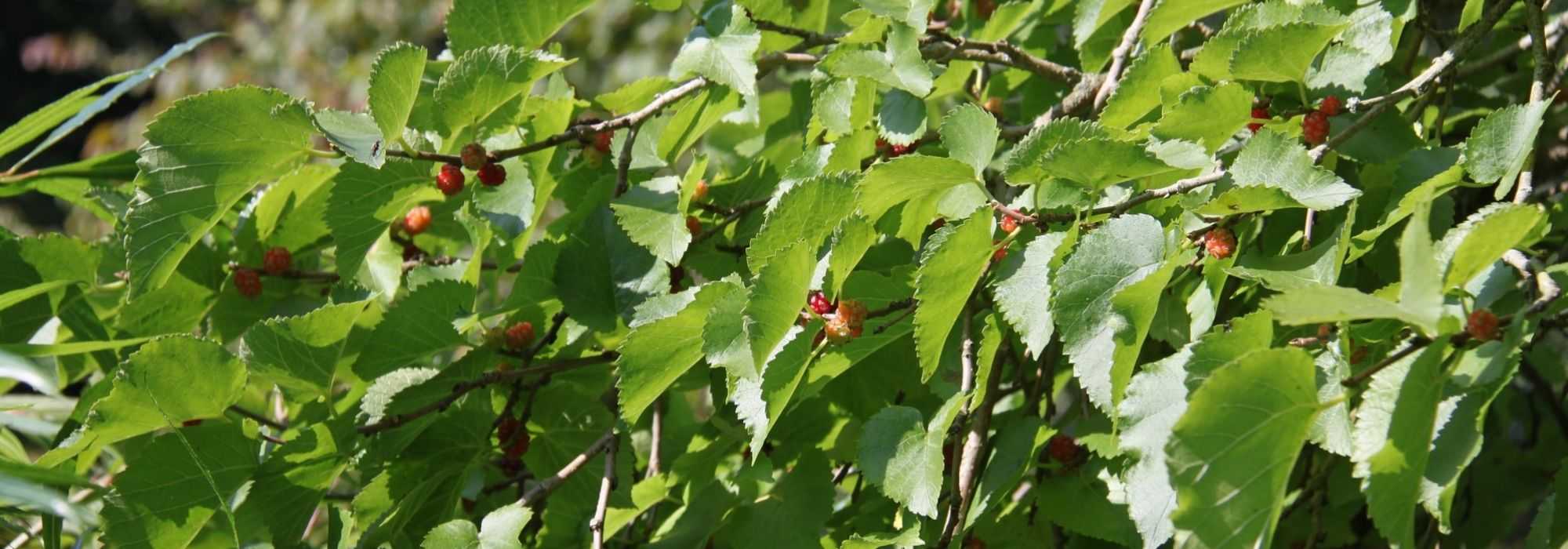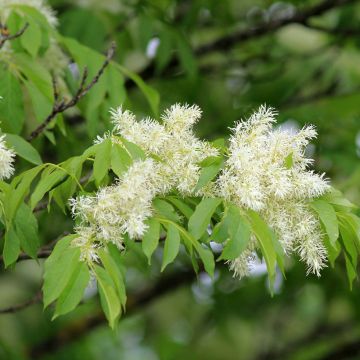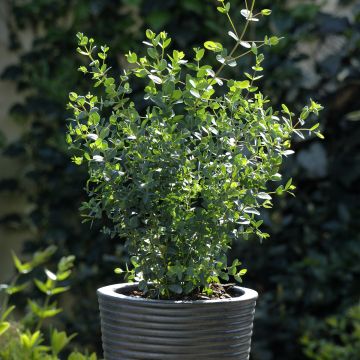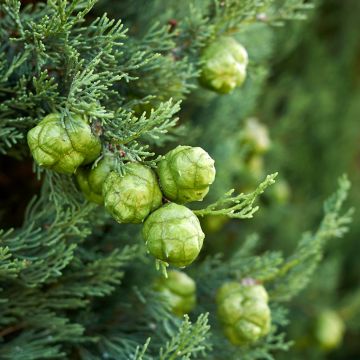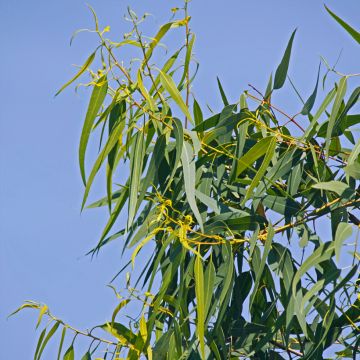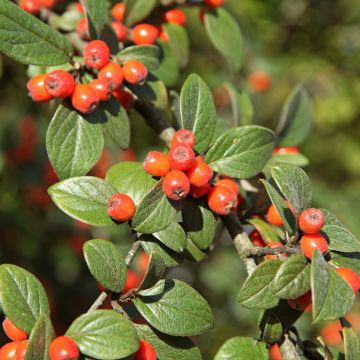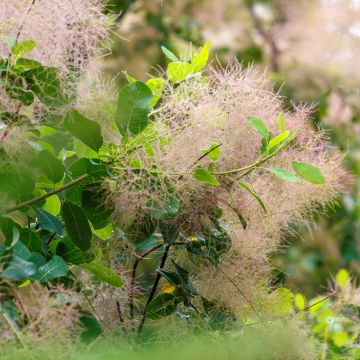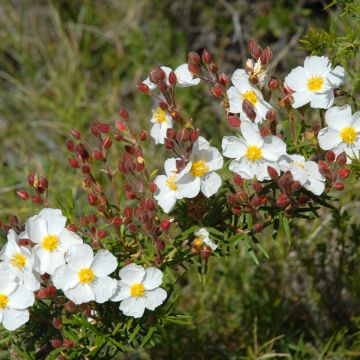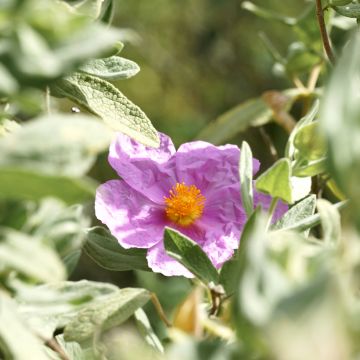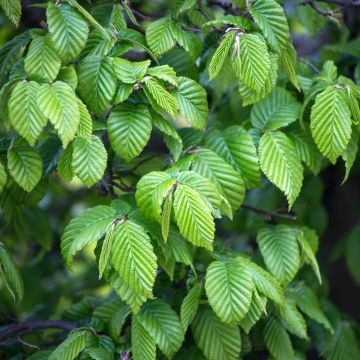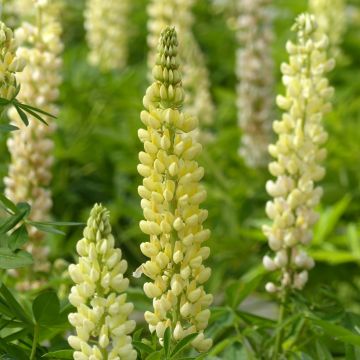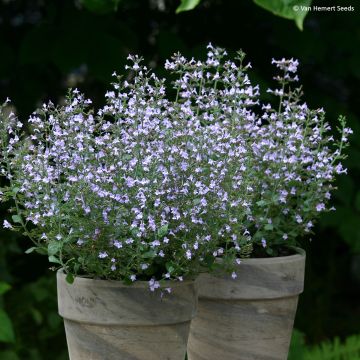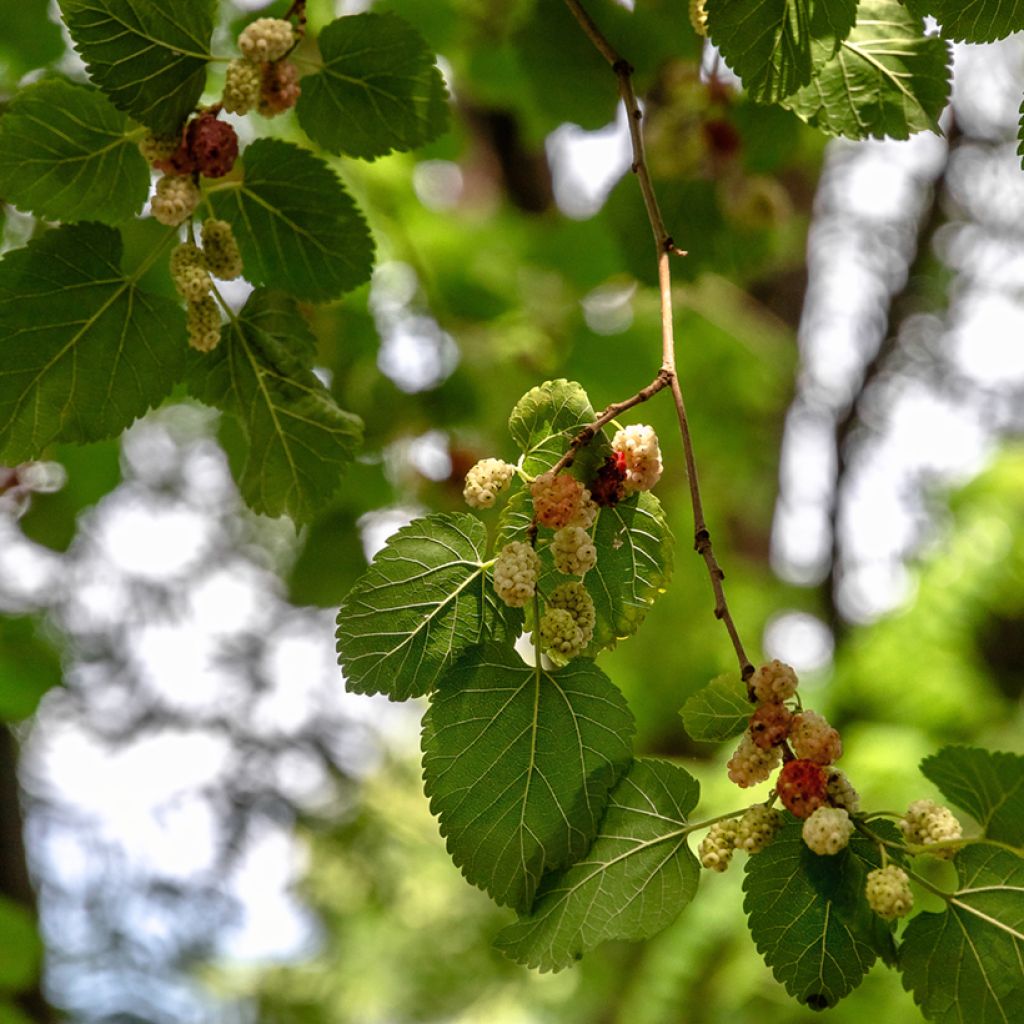

Morus alba seeds - Mullberry
Morus alba seeds - Mullberry
Morus alba
White Mulberry, Common Mulberry
Special offer!
Receive a €20 voucher for any order over €90 (excluding delivery costs, credit notes, and plastic-free options)!
1- Add your favorite plants to your cart.
2- Once you have reached €90, confirm your order (you can even choose the delivery date!).
3- As soon as your order is shipped, you will receive an email containing your voucher code, valid for 3 months (90 days).
Your voucher is unique and can only be used once, for any order with a minimum value of €20, excluding delivery costs.
Can be combined with other current offers, non-divisible and non-refundable.
Home or relay delivery (depending on size and destination)
Schedule delivery date,
and select date in basket
This plant carries a 6 months recovery warranty
More information
We guarantee the quality of our plants for a full growing cycle, and will replace at our expense any plant that fails to recover under normal climatic and planting conditions.
Would this plant suit my garden?
Set up your Plantfit profile →
Description
Morus alba, or white mulberry, also known as the common mulberry, is a tree that is both ornamental and fruit-bearing, highly valued in southern regions for its dense and lush deciduous foliage. Its leaves are pale green in spring and turn a beautiful golden hue in autumn. It produces pinkish-white to purplish-red, even blackish edible fruits, which are harvested in late spring. Their flavour is sweet and sugary, though slightly bland. It is very hardy, withstanding temperatures as low as -28°C and tolerates heat as well as drought. Its strong root system prefers deep but well-drained soils. For centuries, its leaves have been the primary food source for silkworms.
This common mulberry, native to Mongolia and India, belongs to the Moraceae family, like fig trees, and contains latex in its tissues. Introduced to France in the late 15th century, it fostered the development of sericulture, or silkworm farming. Its natural habit is stocky, with a short, thick trunk topped by a spreading and slightly irregular crown if the tree is not pruned. However, it is often pruned into a ball shape for a more compact appearance. Its growth is rapid during its early years, then gradually slows. It can reach up to 10 metres in height and width. Its bark is initially smooth and light grey, then thickens with age and takes on a grey-brown hue as it cracks. The deciduous foliage of the white mulberry is particularly interesting, as its leaves are polymorphous: they vary in shape depending on their position on the branches. They measure 6 to 8 cm wide and 10 to 20 cm long, and can be either single and heart-shaped or divided into several lobes with toothed edges. Their upper surface is glossy, and their colour evolves from pale green to golden yellow in autumn. In April, the tree produces inconspicuous flowers, in the form of male and female catkins located on separate parts of the same tree. They are followed by fruits in June, or even early July, depending on the climate: these fleshy, ovoid fruits measure 2 to 3 cm and turn from white to purplish-pink when ripe. They do not stain the ground and can be eaten fresh or dried. They are also loved by birds.
The root system of this mulberry is both taprooted and running, making transplantation tricky and requiring planting it at a distance from buildings.
The seeds of Morus alba require cold stratification for several weeks to break their dormancy. Once ready, they can be sown in spring in light, moist soil at a temperature of around 20°C. Germination may take several weeks.
Highly adaptable Morus alba thrives in fertile, well-loosened and drained soil, in a warm and sunny position. It tolerates urban pollution but is sensitive to sea spray. Gradually enriching the soil through the decomposition of its fallen leaves, it is an excellent choice for fallow land. It is often used as a street tree, but also finds its place in a fruit hedge alongside blackthorn, Mirabelle de Nancy plum tree, and fruiting dogwoods, providing a refuge and food source for birds. Planted alone in the centre of a lawn, it offers welcome shade in summer. It is also effective on slopes to limit soil erosion.
Flowering
Foliage
Plant habit
Botanical data
Morus
alba
Moraceae
White Mulberry, Common Mulberry
Morus multicaulis, Morus alba var. multicaulis, Morus australis ( Hort. ), Morus alba var. constantinopolitana, Morus alba f. tatarica
China
Other Tree seeds
View all →Planting and care
To germinate Morus alba seeds, a rigorous procedure must be followed. Begin by stratifying the seeds by placing them in a moist substrate, such as sand or a sand-peat mixture, at a temperature of around 4°C for 2 to 3 months. This cold period simulates the winter conditions needed to break the seed's dormancy. After stratification, in early spring, sow the seeds in deep trays, covering them with a thin layer of substrate equivalent to their diameter. Keep the soil moist and place in a warm, well-lit spot.
Once the seedlings have developed several leaves and are sturdy enough, usually a few weeks after germination, proceed with transplanting. Move each young plant into a larger individual pot or directly into the ground, ensuring you choose a sunny location with well-drained soil. Water regularly to encourage good root development.
Cultivation: the common mulberry is a hardy and easy-to-grow tree. It thrives in a sunny spot with well-drained, deep, and fertile soil, but it can also adapt to poorer soils. Once well-established, it tolerates drought well, though regular watering is beneficial during periods of intense heat, especially for young plants.
Plant it in autumn or early spring, avoiding frost periods. Dig a wide hole and add some compost to encourage good root development. Mulching around the base helps retain moisture and limits weed growth.
Hardy down to -28°C, white mulberry dislikes overly compacted or waterlogged soils, which can suffocate its roots.
Sowing period
Intended location
Planting & care advice
This item has not been reviewed yet - be the first to leave a review about it.
Similar products
Haven't found what you were looking for?
Hardiness is the lowest winter temperature a plant can endure without suffering serious damage or even dying. However, hardiness is affected by location (a sheltered area, such as a patio), protection (winter cover) and soil type (hardiness is improved by well-drained soil).

Photo Sharing Terms & Conditions
In order to encourage gardeners to interact and share their experiences, Promesse de fleurs offers various media enabling content to be uploaded onto its Site - in particular via the ‘Photo sharing’ module.
The User agrees to refrain from:
- Posting any content that is illegal, prejudicial, insulting, racist, inciteful to hatred, revisionist, contrary to public decency, that infringes on privacy or on the privacy rights of third parties, in particular the publicity rights of persons and goods, intellectual property rights, or the right to privacy.
- Submitting content on behalf of a third party;
- Impersonate the identity of a third party and/or publish any personal information about a third party;
In general, the User undertakes to refrain from any unethical behaviour.
All Content (in particular text, comments, files, images, photos, videos, creative works, etc.), which may be subject to property or intellectual property rights, image or other private rights, shall remain the property of the User, subject to the limited rights granted by the terms of the licence granted by Promesse de fleurs as stated below. Users are at liberty to publish or not to publish such Content on the Site, notably via the ‘Photo Sharing’ facility, and accept that this Content shall be made public and freely accessible, notably on the Internet.
Users further acknowledge, undertake to have ,and guarantee that they hold all necessary rights and permissions to publish such material on the Site, in particular with regard to the legislation in force pertaining to any privacy, property, intellectual property, image, or contractual rights, or rights of any other nature. By publishing such Content on the Site, Users acknowledge accepting full liability as publishers of the Content within the meaning of the law, and grant Promesse de fleurs, free of charge, an inclusive, worldwide licence for the said Content for the entire duration of its publication, including all reproduction, representation, up/downloading, displaying, performing, transmission, and storage rights.
Users also grant permission for their name to be linked to the Content and accept that this link may not always be made available.
By engaging in posting material, Users consent to their Content becoming automatically accessible on the Internet, in particular on other sites and/or blogs and/or web pages of the Promesse de fleurs site, including in particular social pages and the Promesse de fleurs catalogue.
Users may secure the removal of entrusted content free of charge by issuing a simple request via our contact form.
The flowering period indicated on our website applies to countries and regions located in USDA zone 8 (France, the United Kingdom, Ireland, the Netherlands, etc.)
It will vary according to where you live:
- In zones 9 to 10 (Italy, Spain, Greece, etc.), flowering will occur about 2 to 4 weeks earlier.
- In zones 6 to 7 (Germany, Poland, Slovenia, and lower mountainous regions), flowering will be delayed by 2 to 3 weeks.
- In zone 5 (Central Europe, Scandinavia), blooming will be delayed by 3 to 5 weeks.
In temperate climates, pruning of spring-flowering shrubs (forsythia, spireas, etc.) should be done just after flowering.
Pruning of summer-flowering shrubs (Indian Lilac, Perovskia, etc.) can be done in winter or spring.
In cold regions as well as with frost-sensitive plants, avoid pruning too early when severe frosts may still occur.
The planting period indicated on our website applies to countries and regions located in USDA zone 8 (France, United Kingdom, Ireland, Netherlands).
It will vary according to where you live:
- In Mediterranean zones (Marseille, Madrid, Milan, etc.), autumn and winter are the best planting periods.
- In continental zones (Strasbourg, Munich, Vienna, etc.), delay planting by 2 to 3 weeks in spring and bring it forward by 2 to 4 weeks in autumn.
- In mountainous regions (the Alps, Pyrenees, Carpathians, etc.), it is best to plant in late spring (May-June) or late summer (August-September).
The harvesting period indicated on our website applies to countries and regions in USDA zone 8 (France, England, Ireland, the Netherlands).
In colder areas (Scandinavia, Poland, Austria...) fruit and vegetable harvests are likely to be delayed by 3-4 weeks.
In warmer areas (Italy, Spain, Greece, etc.), harvesting will probably take place earlier, depending on weather conditions.
The sowing periods indicated on our website apply to countries and regions within USDA Zone 8 (France, UK, Ireland, Netherlands).
In colder areas (Scandinavia, Poland, Austria...), delay any outdoor sowing by 3-4 weeks, or sow under glass.
In warmer climes (Italy, Spain, Greece, etc.), bring outdoor sowing forward by a few weeks.






























